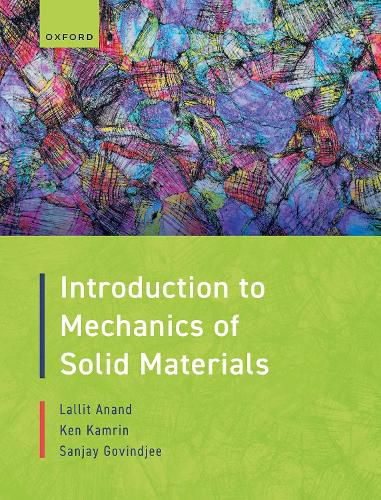Readings Newsletter
Become a Readings Member to make your shopping experience even easier.
Sign in or sign up for free!
You’re not far away from qualifying for FREE standard shipping within Australia
You’ve qualified for FREE standard shipping within Australia
The cart is loading…






Introduction to Mechanics of Solid Materials is concerned with the deformation, flow, and fracture of solid materials. This textbook offers a unified presentation of the major concepts in Solid Mechanics for junior/senior-level undergraduate students in the many branches of engineering - mechanical, materials, civil, and aeronautical engineering among others.
The book begins by covering the basics of kinematics and strain, and stress and equilibrium, followed by a coverage of the small deformation theories for different types of material response: (i) Elasticity; (ii) Plasticity and Creep; (iii) Fracture and Fatigue; and (iv) Viscoelasticity. The book has additional chapters covering the important material classes of: (v) Rubber Elasticity, and (vi) Continuous-fiber laminated composites. The text includes numerous examples to aid the student. A substantial companion volume with example problems is available free of charge on the book’s companion website.
$9.00 standard shipping within Australia
FREE standard shipping within Australia for orders over $100.00
Express & International shipping calculated at checkout
Introduction to Mechanics of Solid Materials is concerned with the deformation, flow, and fracture of solid materials. This textbook offers a unified presentation of the major concepts in Solid Mechanics for junior/senior-level undergraduate students in the many branches of engineering - mechanical, materials, civil, and aeronautical engineering among others.
The book begins by covering the basics of kinematics and strain, and stress and equilibrium, followed by a coverage of the small deformation theories for different types of material response: (i) Elasticity; (ii) Plasticity and Creep; (iii) Fracture and Fatigue; and (iv) Viscoelasticity. The book has additional chapters covering the important material classes of: (v) Rubber Elasticity, and (vi) Continuous-fiber laminated composites. The text includes numerous examples to aid the student. A substantial companion volume with example problems is available free of charge on the book’s companion website.